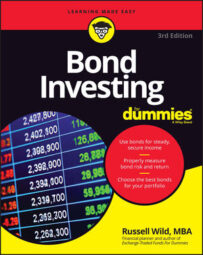The municipal bond market is now about $3.7 trillion, which is a little more than one-third the size of the Treasury market. But unlike Treasuries, which are held by investors all over the world — by both individuals and governments — municipal bonds are purchased primarily by U.S. households. Munis, due to their tantalizing tax advantage, are generally the only major kind of bond more popular with individual investors than with institutions.
So who or what exactly issues these tax-exempt wonders, and what other qualities distinguish them from all other bonds?
The issuers of municipal bonds include, of course, municipalities, such as cities and towns. But they also include counties, public universities, certain private universities, airports, not-for-profit hospitals, public power plants, water and sewer administrations, various and sundry nonprofit organizations, bridge and tunnel authorities, housing authorities, and an occasional research foundation.
Any government, local agency, nonprofit, or what-have-you that is deemed to serve the public good, with a blessing from the IRS (and sometimes voters), may have the honor of issuing a municipal bond.
Compare and contrast municipal bonds with other bonds
The tax-exempt status of munis is unquestionably their most notable and easily recognizable characteristic.
Like most bonds, munis come with differing maturities. Some mature in a year or less, others in 20 or 30 years, and a select few have even longer maturities. Unlike most bonds, they tend to be issued in minimal denominations of $5,000 and multiples of $5,000 (not a minimum of $1,000 and multiples of $1,000, like corporate bonds and most Treasuries).
Unlike Treasuries, both corporate bonds and munis are often callable, meaning the issuer can kick back your money and sever your relationship before the bond matures. Like other bonds, the interest rate on munis is generally fixed, but the price of the bond can go up and down; unless you hold your bond to maturity, you may or may not get your principal returned in full.
(And even if you get your principal back in full, it may have been seriously eaten away by inflation after several decades in hiding.) If the maturity of the bond is many years off, the price of the bond can go up and down considerably — usually in inverse relation to interest rates.
The diversification of municipal bonds
The tax-exempt status of munis isn’t the only reason they may belong in your portfolio. Municipal bonds also offer a fair degree of diversification, even from other bonds.
Because they are the only kind of bond more popular with households than with institutions, the muni market may, at times, be swayed more by public demand than other bond markets.
For example, when the stock market tanks and individual investors get butterflies in their stomachs, they tend to sell out of their stock holdings (often a mistake) and load up on what they see as less risky investments — bonds of all sorts, including munis.
But the butterflies may also flock in the other direction. At the end of 2010, CBS’s 60 Minutes aired a story titled “The Day of Reckoning” featuring the predictions of a highly reputable bank analyst, Meredith Whitney. Her forecast, backed by interviews with several state governors and comptrollers, proclaimed that a muni-market collapse was in our imminent future.
Because of this widely seen segment, the muni market nearly did collapse. Investors panicked about the market for any securities issued by local governments. Prices on munis, especially those issued in financially troubled areas of the country, took a nosedive. Fortunately, the air cleared quickly, and the value of the muni market made a quick recovery.
When the demand for munis goes up, just as when the demand for, say, gold or oil goes up, it tends to drive prices higher. Popular demand or lack of demand can have a huge effect on muni pricing — more so than individual-investor caprices influence the values of corporate bonds and Treasuries. Those taxable bonds, in contrast, tend to be more interest-rate sensitive.
When interest rates rise, bond prices generally fall; when interest rates drop, bond prices tend to move up.
The differences among the many kinds of bonds indicate it’s likely a good idea to hold at least several varieties in your portfolio. As an example of this kind of diversification, consider that in 2010, investment-grade (high quality) corporate bonds returned nearly 18 percent. (Interest rates were falling, which is good for bonds, and corporations were starting to look stronger after the pummeling of 2008.)
But that same year, munis — partly due to the 60 Minutes story — returned a mere 2 percent. The following year (2011), munis made a phenomenal comeback; it was their turn to shine. They earned, in the aggregate, a (tax-free) 10 percent. Meanwhile, corporate bonds began to slow, earning about 7.5 percent for the year.

